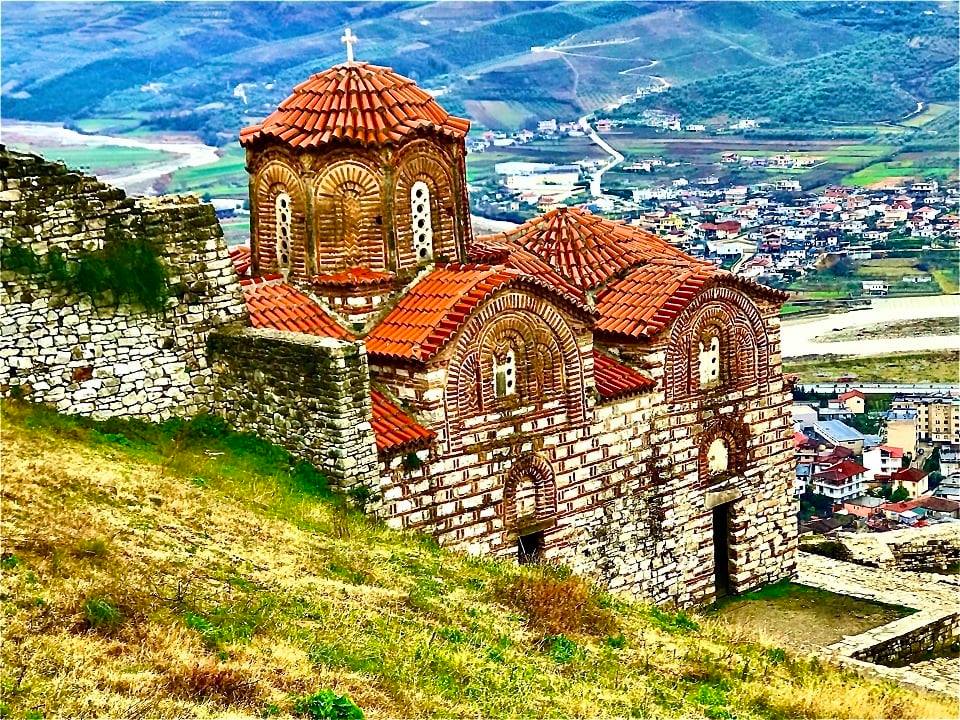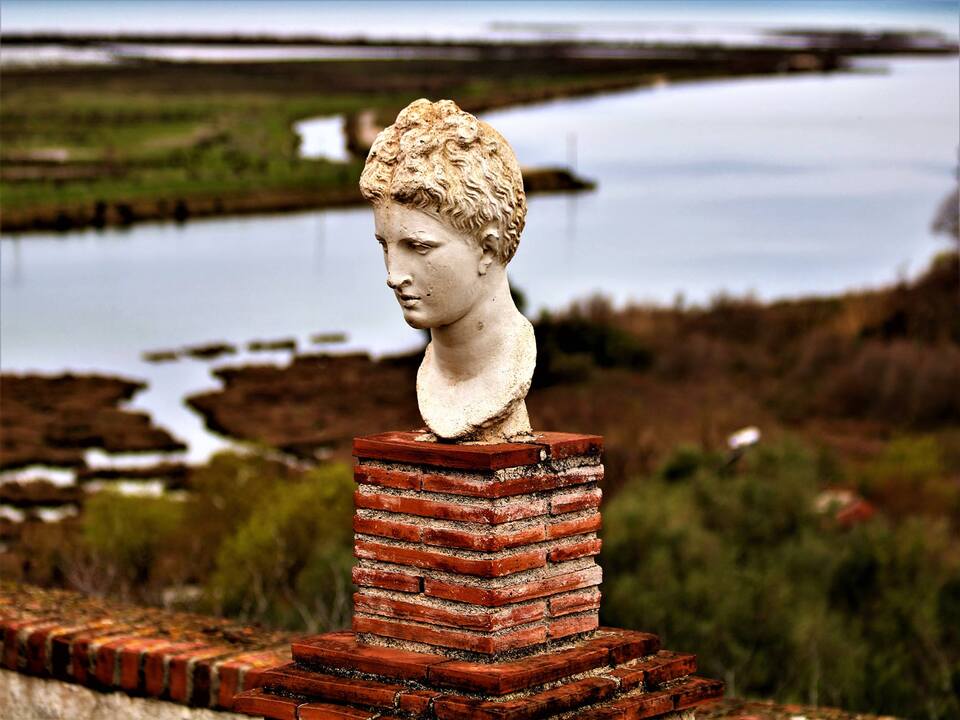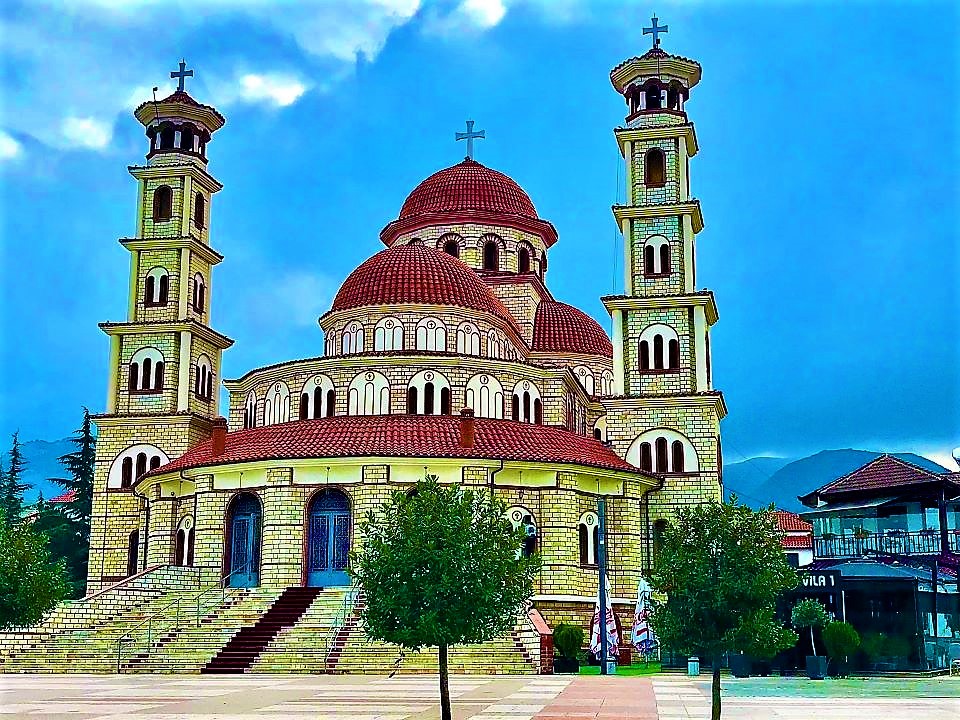
Admire the World Heritage-listed architecture of Dubrovnik and Montenegro’s Kotor, climbing along their ancient city walls. Lose yourself in Tirana, Albania’s colorful capital, and partake in the local’s favorite pastime: coffee-drinking and people-watching. Sail across the blue waters of Lake Ohrid, one of Europe’s oldest lakes. No wonder North Macedonia and Albania share this beautiful attraction nobody would want to let it go. Sitting alongside its Ottoman past, the North Macedonian capital of Skopje has reinvented its center with gleaming neo-classical monuments and buildings, adding a new layer to this fascinating city.
DISCOVERY HIGHLIGHTS
Welcome to Skopje. If you arrive early in North Macedonia’s capital city perhaps venture out and discover the myriads of statues and grand monuments for which this city has become famous for (aimed to bolster national pride), first and foremost the massive statue of Alexander the Great on horseback right in the center of Macedonia Square. Walk past Byzantine domes, Turkish baths, and also newly built neo-classical buildings, sampling gozleme and tasty baklava along the way. The 30 mosques, innumerable caravanserais and hammams that fill its winding streets are a testament to Skopje’s Ottoman past. Take a step back to those times with a visit to the Daut Pasha Hammam, or journey through the humbling Holocaust Museum to learn how Macedonia suffered during this tragic chapter of history. Overnight in Skopje.
After breakfast we will visit, Matka Canyon, a deep ravine cut into the Suva mountains by the Treska River, 15 kilometers southwest of the city. This area is home to several medieval monasteries, caves, and over 70 species of endemic butterflies. There is the option to explore the canyon’s sights by boat. One of the monasteries worth exploring is St Andrew’s Monastery, which contains many superb frescoes of great artistic importance. There is also Vrelo cavern, a water-filled cave with incredible stalagmites and uncharted depths it’s speculated to be the deepest underwater cave in the world. Upon arrival back into Skopje this afternoon, there is time to get lost in the narrow lanes of Caršija, Skopje’s most atmospheric neighborhood, or take in the stone bridge over the river Vardar an iconic sight that acts as a handy connection between Macedonia Square and the Old Bazaar. Perhaps visit the Museum of the City of Skopje, housed in the old Railway Station, which is itself a unique piece of history. Its unusual, part-ruined exterior is a result of the 1963 earthquake. Overnight in Skopje.
After breakfast we will drive to Lake Ohrid City. Europe’s oldest lake and one of the oldest human settlements in the world, Ohrid has a wealth of historic sites and religious monuments to discover. Ohrid is an eternal town, a magical hill whose primordial pulsation links ancient and modern times forever. The town is said to have once been home to 365 churches, one for each day of the year, earning it the nickname “the Macedonian Jerusalem”, while historical excavations date back to Neolithic times. Overinight in Ohrid.
After breakfast we will cross the border into Albania and continue to the remote and rarely visited town of Berat, a gem of a town that was lucky to escape destruction during communist times. Learn about the city on an guided walking tour before climbing up to the still inhabited fortress for fantastic views over town. In the afternoon there is plenty of time to mingle with locals in the park or at the many cafes. The real surprise of Albania is the people. Their warmth to strangers is infectious and you’re bound to find yourself swapping stories over a glass of raki or three. Overnight in Berat.
After breakfast, transfer to Tirana. This addictive country has myriad faces. In the rugged north the Alps are so fierce they’re deemed ‘accursed’, while the south enjoys one of Europe’s least known and most beautiful coastlines. A unique mixture of cultures and customs, Tirana is filled with craziness, from its traffic to its nightlife, but on its doorstep are mosques, citadels, Ottoman architecture, and a stunning dose of the medieval Balkans. Tirana is the capital of Albania and its biggest city, but it’s still small and compact, with architectural influences from Italy and Turkey. Recently many buildings have been painted to alleviate the Soviet block feeling that pervaded. Many upgrades have been made all over town, such as new parks and wide pavements, a process that’s still on-going. Perhaps take a cable car ride up Dajti Mountain for breath-taking views of the city below. Overnight in Tirane.
After breakfast, take a half-day trip to the mountain village and former Albanian capital of Kruja. Kruja was the last stronghold of Skanderbeg’s (the national hero of Albania) army until the Ottomans took over the entire country. There is plenty of time to explore the citadel and the famous bazaar area. Return to Tirana in the early afternoon. Tirana is dotted with many museums. You can’t miss the National History Museum, just look for the gargantuan mosaic on the facade that represents the development of Albania’s history. The main sight in Tirana is the 1821 Et’hem Bey Mosque, right on the city’s main square. Closed under communist rule, the mosque resumed as a place of worship in 1991. 10,000 people attended the reopening and the event was considered a milestone in the rebirth of religious freedom in Albania. Overnight in Tirana.
After breakfast we will drive to Kotor but first we will stop to Shkodra. Shkoder is one of the oldest cities in Europe and now the main commercial center and largest town of northern Albania. Upon arrival head out on a short orientation walk along the Pjaca, which is the main pedestrianized street, lined with 19th-century architecture and dominated by Ebu Beker Mosque. Then head north of the city to visit the Venetian era Rozafa Castle, set high on a mountain with panoramic views of Shkoder, Lake Shkodra and the Albanian countryside, before continuing to Kotor on the Montenegrin coast, our next overnight stop is Kotor. Enjoy the rest of the evening in this splendid medieval town picturesquely located on the fjord of the same name. Overnight in Kotor.
Free day in Kotor, Montenegro’s fortified town wedged between soaring mountains and sparkling Adriatic waters. This 5th-century World Heritage-listed city is set on a secluded bay, with towering peaks surrounding a rocky coastline dotted with pretty waterside towns. In its crooked alleyways, get lost and mingle with the locals. Check out the 12th-century Cathedral, the South Gates, and the Armoury Square. Later, perhaps take a cruise on the Kotor Fjord – the longest fjord south of Scandinavia and visit an island with a church that’s almost as big as the island itself! In the evening the city walls are prettily lit up to provide a unique night-time perspective. Overnight Kotor.
After breakfast we will be transferred to picture-perfect Dubrovnik. There are many monuments to explore in the city, including the 15th century Rector’s Palace, monasteries with cloistered gardens, and fine baroque churches with copper domes. The main pedestrian promenade, once a shallow sea channel, is now paved with glistening white limestone, in stark contrast to the warm red terracotta roofs. It is hard to imagine a more beautiful city. A walk along the city walls of ‘Game of Thrones’ fame is not to be missed. Overnight in Dubrovnik.
Your Western Balkans trip comes to an end this morning. End of our service.
Tour Itinerary: The Western Balkans Tour
Fill up the form below to tell us what you're looking for



Register now! We will send you best offers for your trip.
WhatsApp us
